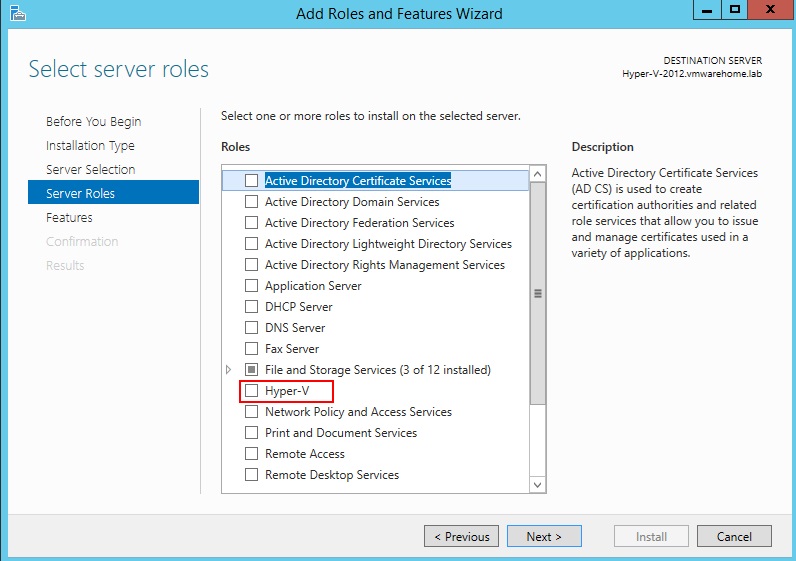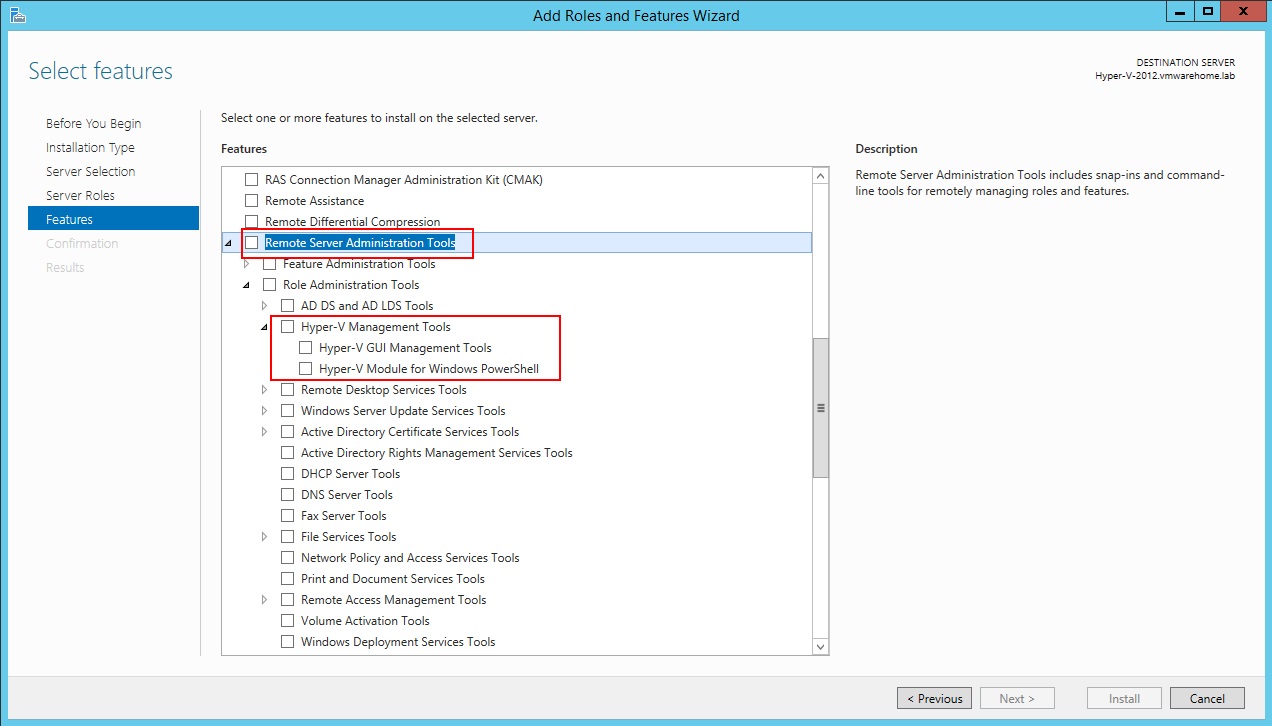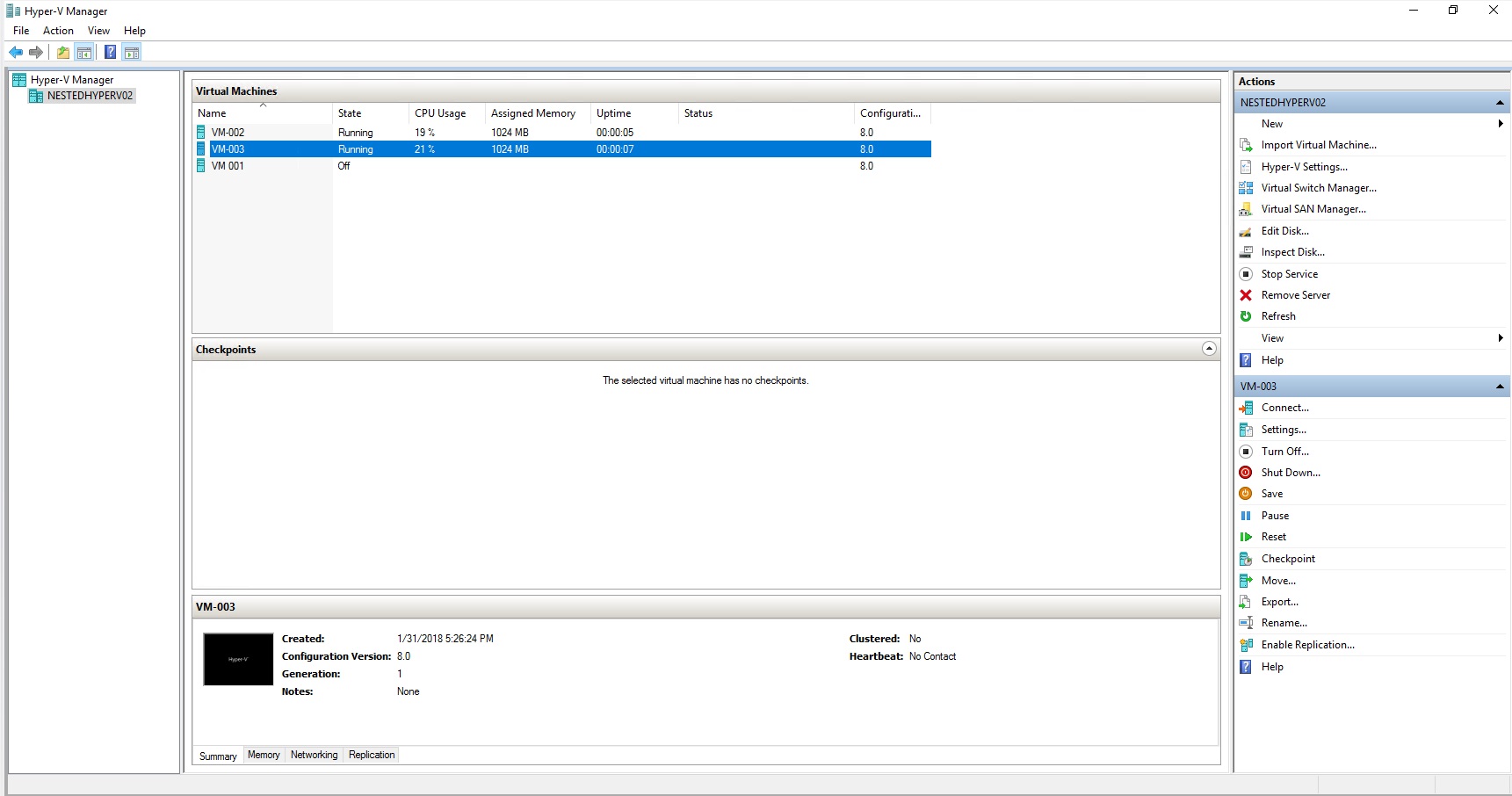Hyper-V Manager is the central administration tool for Microsoft Hyper-V through which an administrator can configure all Hyper-V settings, Virtual Machines, Virtual Switching, Virtual SAN capabilities and all dependent virtual operations of a Hyper-V Infrastructure.
Hyper-V Manager can be installed in any Windows OS (Windows Server 2008 and above) that has Hyper-V role and in Windows 7 through Remote Server Administration Tools (RSAT) as a role Administration Tool. RSAT is not enabled by default and must be set manually.
There are 3 major versions of Hyper-V and Hyper-V Manager that were launched by Microsoft in Windows Server 2008, 2012 and 2016 respectively. If we count each version in each Windows OS (with R2 and Hyper-V versions), we get 3 versions for each version of Windows Servers.
Note: The Microsoft Hyper-V Server 2008/2012 and 2016 is a stand-alone product that contains only the Windows hypervisor, a Windows Server driver model, and virtualization components.
When using Hyper-V Manager for remote Hyper-V, features of Hyper-V Manager will be the features/version of Hyper-V host.
Example: If we are connecting from a Hyper-V Manager 2012 to a Hyper-V 2016 host, features available will be from the remote Hyper-V Manager 2012 and not from the Hyper-V 2016 host.
Hyper-V Manager improvements in the last 2016 version as per Microsoft official Docs page.
- Alternate credentials support – You can now use a different set of credentials in Hyper-V Manager when you connect to another Windows Server 2016 or Windows 10 remote host. You can also save these credentials to make it easier to log on again.
- Manage earlier versions – With Hyper-V Manager in Windows Server 2016 and Windows 10, you can manage computers running Hyper-V on Windows Server 2012, Windows 8, Windows Server 2012 R2 and Windows 8.1.
- Updated management protocol – Hyper-V Manager now communicates with remote Hyper-V hosts using the WS-MAN protocol, which permits CredSSP, Kerberos or NTLM authentication. When you use CredSSP to connect to a remote Hyper-V host, you can do a live migration without enabling constrained delegation in Active Directory. The WS-MAN-based infrastructure also makes it easier to enable a host for remote management. WS-MAN connects over port 80, which is open by default.
How does it work?
Administrators can create Hyper-V Failover Cluster with Hyper-V Manager. A Failover Cluster (or High Availability Cluster) is a set of 2 or more Hyper-V nodes. Hyper-V works in Cluster mode to provide High Availability and Failover to Virtual Machines with only a few seconds of downtime. Virtual Machines will still be unavailable for a few seconds, the time (seconds) failover services takeover and move Virtual Machines between nodes. Hyper-V Failover Cluster is then administrated through Failover Cluster Manager.
With Hyper-V Manager, an administrator can manage a local or remote Hyper-V. Hyper-V Manager will be installed when you install Hyper-V Management tools which you can do either through a full Hyper-V installation or a tools-only installation. Doing a tools-only installation means you can use the tools on computers that don’t meet the hardware requirements to host Hyper-V.
How to Install Hyper-V Manager?
Hyper-V Manager can be installed with Hyper-V Management Tools through Server Manager “Add Roles and Features” or through PowerShell. Hyper-V Manager can be installed when installing Hyper-V role or can be installed when Hyper-V role is already installed, and not as a Hyper-V Manager feature.
Install Hyper-V Manager through Server Manager – “Add Roles and Features.”
In “Server Manager Dashboard” select “Manager” and “Add Roles and Features,” click next until you reach Roles section if Hyper-V is already installed, click next and in Features section check in “Remote Server Administration Tools – Role Administration Tools – Hyper-V Management Tools.”
Note: If the plan is to install Hyper-V role you can select here if the plan is just to install Hyper-V Manager, click next.

In this section choose the Hyper-V Manager features to install: Hyper-V Manager GUI Management Tools, Hyper-V Module for Windows PowerShell.

Hyper-V Module for Windows PowerShell is a module where the administrator can do all Hyper-V Manager tasks using PowerShell scripting (like creating and change VMs).
After Hyper-V Module for Windows PowerShell is installed, you can find module source files in C:\Windows\System32\WindowsPowerShell\v1.0\Modules\Hyper-V. The module will automatically load every time PowerShell is started.
More details about Hyper-V Module for Windows PowerShell can be found here: Hyper-V and Windows PowerShell
Install Hyper-V Manager using PowerShell
To install Hyper-V Role without Management Tools run:
Install-WindowsFeature -Name Hyper-V

To install Hyper-V Role with Management Tools run:
Install-WindowsFeature -Name Hyper-V -IncludeManagementTools
To install just Hyper-V Management Tools run:
Install-WindowsFeature RSAT-Hyper-V-Tools -IncludeAllSubFeature
To install and use just Hyper-V Module for Windows PowerShell run:
Install-WindowsFeature Hyper-V-PowerShell
After installing Hyper-V Manager, you will see the icon in your Windows (in Administrative Tools).


Possible operations and tasks in Hyper-V Manager:
Virtual Machines
- Create/Change Virtual Machine
- Rename Virtual Machine
- Start/Stop Virtual Machine
- Add virtual devices
- Add/change Virtual Networks
- Add/change Virtual Disks
- Install Guest OS
- Create/Delete Snapshots
- Enable Virtual Machine Replication
Virtual Switches
- Create/Change Virtual Network Switch (Internal, External or Private Networks)
- Enable Switch Extensions
- WFP vSwitch Extension LightWeight Filter for Hyper-V Virtual Switch Filtering
- Microsoft Azure VFP Switch Extension
- Microsoft NDIS Packet Capture Filter Driver
- Rename Virtual Network Switch
- Add VLANs
- Add/Change Mac Addresses
Virtual SAN Manager
- Create/Change Virtual Fiber Channel SANs
- Define/Change World Wide Names (WWN
- World Wide Port Name (WWPN)
- World Wide Node Name (WWNN)
With Hyper-V Manager, administrators can also Edit and Inspect Virtual Machine Virtual Hard Disks (virtual disks are stored as .vhd or .vhx files)
Conclusion:
Hyper-V Manager is the primary management tool for an administrator managing their Hyper-V Infrastructure (Local, Remote or even Cluster). As we have seen, this can be done through Hyper-V Manager GUI or use Hyper-V Module for Windows PowerShell. All tasks and operations can be done with both options.
Experience modern data protection with this latest Vembu BDR Suite v.3.9.0 FREE edition. Try the 30 days free trial here: https://www.bdrsuite.com/vembu-bdr-suite-download/
Follow our Twitter and Facebook feeds for new releases, updates, insightful posts and more.



Leave A Comment